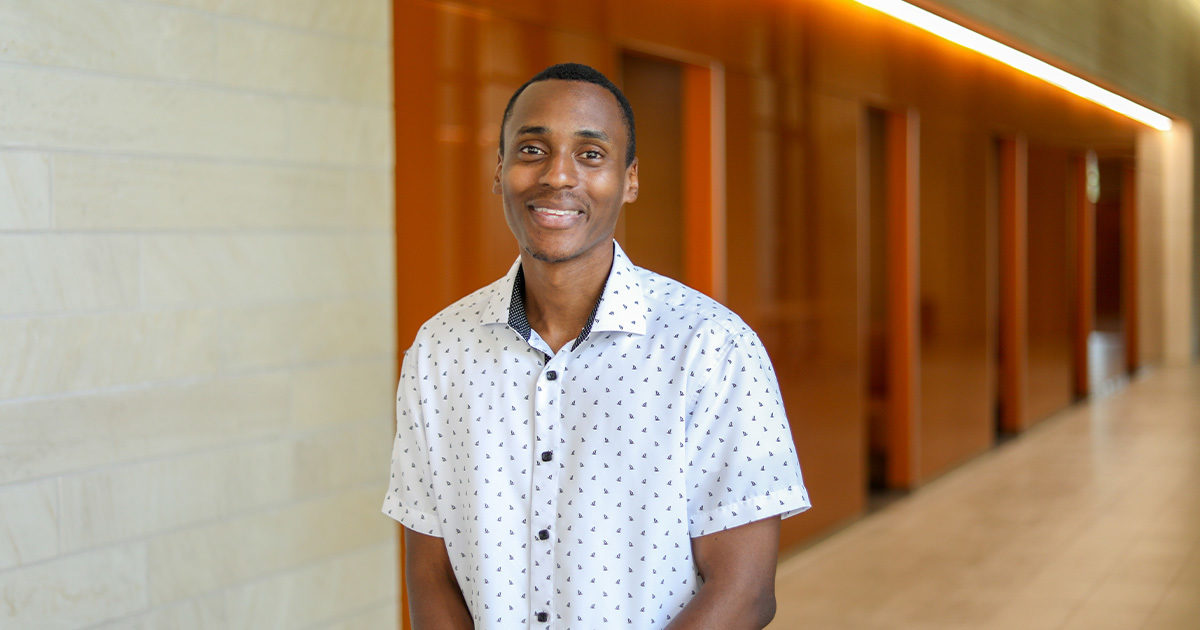Life With MS: One Patient’s Story
Balford shares his story of strength and determination in hopes of inspiring others who may be battling multiple sclerosis
Reviewed by: Multiple Sclerosis and Neuroimmunology Center patient, Balford
Written by: Lauryn Feil

In 2017, Balford was diagnosed with multiple sclerosis at age 33. He first noticed that something was wrong after an abrupt decline in both the sight in his left eye and his sense of taste. Confused and scared, he went to his primary care doctor and received testing and medication for a variety of conditions, but it was his eye doctor that referred him to a neurologist at a local hospital who ultimately made the diagnosis. This news came as a complete shock to Balford and his family.
Tackling Symptoms of Multiple Sclerosis
Multiple sclerosis (MS) is a disease in which the body’s immune system has an abnormal response to the central nervous system that causes inflammation resulting in damage to the outer sheath that protects the nerves. MS manifests differently in each individual, but some common symptoms can be fatigue, imbalance, weakness, numbness, cognitive dysfunction, and more. There is currently no cure, but with treatment many people find the symptoms can be better controlled.
Due to his diagnosis, Balford has had to temporarily give up working full-time and participating in many of the social activities he used to love. He recalls sitting in his hospital bed totally devastated. “When I received my MS diagnosis, I really didn’t know much about the disease, and I had no idea what to do from there,” shares Balford. “But then, while watching the TV in the hospital room alone, I decided I couldn’t let this disease take control of me.”
Balford and his family worked to find a care provider in Austin that specialized in MS treatment and management and finally decided on Esther Melamed, MD, PhD, a board-certified neurologist in UT Health Austin’s Multiple Sclerosis and Neuroimmunology Center within the Mulva Clinic for the Neurosciences. “She has such a warm personality and has worked with me on controlling flare-ups and other symptoms, and it’s been so great to have her help and support,” says Balford.
Through treatment and infusions, Balford was able to work to control some of the symptoms he was experiencing. For example, foot drop is a common symptom many face when battling MS, where it becomes difficult to lift the front of the foot to the correct angle to walk properly. “With the combination of physical therapy, medication, the infusions, and my faith, I am now able to walk again without assistance and even jog a little,” shares Balford.
The Importance of Community
Balford credits his perseverance and motivation to his care team, but also to the community he has found through his church. “Even though I couldn’t be out in public after my infusions, my church community would come visit me at home. They really kept me motivated to keep going, and I wouldn’t be here without them,” says Balford.
Balford hopes to become an MS advocate through the National Multiple Sclerosis Society and wants others to know that there is a community here in Austin where support is ongoing. “MS is difficult and unpredictable, but positivity, hard work, and the right community has helped me heal, and I want others to feel the same,” shares Balford.
For more information about the Multiple Sclerosis and Neuroimmunology Center within the Mulva Clinic for the Neurosciences or to make an appointment, call 1-833-UT-CARES (1-833-882-2737) or visit here.